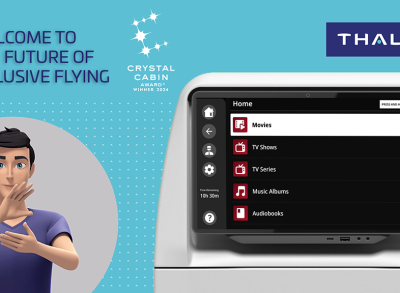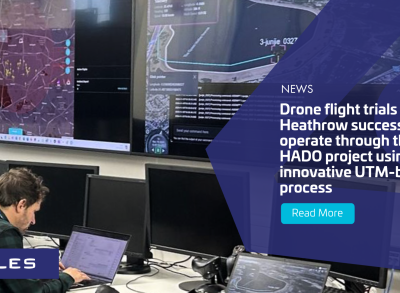OpenSky Platform for open skies

Leveraging decades of experience in the development of safety critical systems, Thales is combining its expertise and new technologies to continue delivering safe and secure ATM. Using Cloud technologies, containers, and open architectures, it is supporting and redefining the ability of these systems to evolve in concert with rising ANSPs expectations and… unpredictability.
The Unbearable Lightness of Flying
In his famous masterpiece, The Unbearable Lightness of Being, Milan Kundera argued that each situation in life demands that one choice be made resulting in only one possible outcome. The inevitable fact that we will never know what other choices could have brought us, according to Kundera, is what is so unbearable about “being”.
Not unlike Kundera’s novel, the world of ATM has long been making one critical, inevitable choice: opting for systems that are safe and secure to ensure sky safety.
To this end, the design of ATM systems has traditionally been closed and proprietary, making it challenging to have the flexibility to integrate 3rd party systems and applications as a result of limited interoperability.
But what held true yesterday does not necessarily need to stand in today’s world. The widespread development of the information technology world has opened up a much broader array of possibilities, including the opportunity of exploring different options, multiple times, in the same domain. “What if” has become a way of working, rather than an unbearable inevitability.
Do you know Jenga?
The Covid-19 pandemic had a severe impact on the world of aviation: worldwide international passenger traffic fell by 60%[1] compared to 2019 levels, and in Europe alone the drop was 73%[2]. Unsurprisingly, this had important repercussions on ATM, a sector primarily relying on air traffic for its revenues.
ANSPs have long been frustrated by the limitations of a proprietary safety mission critical ATM system. However, post COVID-19 these frustrations evolved into needs and expectations for a modern and open ATM system architecture, that is no longer constrained by fixed architectures, unable to scale to the changes in demand, and overly complex to integrate 3rd party applications.
“Today, more than two years after the World Health Organisation (WHO) declared the pandemic, the ATM world is undergoing significant changes”, says Raymond Wei, Vice-President, Chief Technical Officer for Airspace Mobility Solutions at Thales. Air Navigation Service Providers (ANSP) are now increasingly demanding systems that are: adaptable – easily altered to reflect changes in traffic flows; scalable – new elements can be added or the system expanded as needs grow and technologies evolve; flexible – one ANSP can operate part of another’s ANSP airspace under its responsibility; and, open – being able to access best-in-breed 3rd party applications and services, avoiding vendor lock-in.
Achieving such levels of modularity in a world primarily concerned with safety is akin to playing a game of Jenga. It would require being able to add and remove elements within the systems to an ever-greater extent whilst keeping it safe – that is, regularly staking and removing elements on the tower.
Navigating clouds…
For the past few decades, Thales has been delivering safe and secure ATM systems across the world. Delivering such systems, however, has always required significant effort to ensure testing and certification of each element and, where relevant, new increments.
“Today, leveraging the latest technologies available, Thales can build on its experience and innovate to meet ANSPs’ complex expectations”, Wei highlights. More specifically, Thales introduces the OpenSky Platform as the platform of choice for ATC systems, leveraging the latest technological advancements, particularly those brought on by Cloud technologies.
For the Air Traffic Management world, this translates into the ability to natively support cloud computing deployment patterns, enabling hardware utilization efficiency, and scalability in a distributed way.
The use of these new technologies also opens up the possibility of using containers. Containers are units of software that include an application’s code and all its dependencies – that is, what affects its operation. The use of containers allows the core of the ATM system to continue to run uninterrupted and undisturbed, while enabling the possibility to quickly add applications around it as needed.
… to open-up the skies.
To use the image of the Jenga tower. The more players around the tower, the more interesting the game is. The same is true for the ATM environment. Thales is using a partnership approach with its customers, start-ups, universities, and other partners. Leveraging the Thales platform, through a standardized infrastructure and deployed interoperability mechanisms, everyone can contribute to opening the ATM ecosystem, allowing ANSPs increased flexibility in using services.
“By using cloud technologies for its ATM system, Thales has created a virtual environment that enables the ATM world to become more scalable, flexible, safe, secure, and open,” according to Wei.
The platform developed by Thales is more scalable and flexible because the use of containers allows the addition of new applications rapidly (including third party ones). The long hours of testing needed to verify and certify new applications are superseded by: (1) automatic testing on the core functions that will see little to no changes (what we call the Core), allowing for (2) in-depth testing and certification of new applications to ensure compatibility and safety.
The technology behind increased scalability will also allow for a more open architecture. The use of containers on a cloud-native platform allows applications to run quickly and reliably regardless of the computing environment. As such, best-in-breed third party applications can be integrated with the platform quickly and safely, without impacting the core product.
Additionally, containers can be added or used as needed and removed when they are no longer necessary, offering OpenSky Platform users the ability to adapt to variations in traffic demand. Similarly, because it leverages cloud technologies, OpenSky Platform enables new operational models based on sharing digital services according to the needs of ANSPs.
Put more simply, Cloud technologies represent the safety net around the block tower that allows Jenga players to remove and add blocks without ever fearing the tower will tumble. “With decades of experience in providing safe and secure ATM systems, Thales is well positioned and capable of applying new technologies in a safety critical market,” Raymond Wei concludes.
[1]https://www.icao.int/Newsroom/Pages/2020-passenger-totals-drop-60-percent-as-COVID19-assault-on-international-mobility-continues.aspx
[2] https://ec.europa.eu/eurostat/web/products-eurostat-news/-/edn-20211206-1




